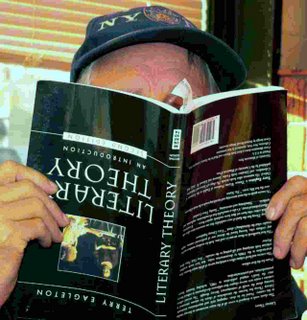There is an interesting comment thread that ran yesterday on 'neath's' blog Walking Turcot Yards. It's happening under some photo images of Montreal's Sohmer Park from around 1910 and for Blogaulaire the discussion has opened up many issues (and a few books) about the history of industrialization in Canada, Québec and the world.
What's so important about Sohmer Park? Check out the post HERE first and see what it looks like in the images.
First, the park started as a private investment sort of like some amusement parks in the twentieth century - but not the kind many of us are familiar with. (I remember the Palisades Park in Council Bluffs, across the Missouri River from Omaha, Nebraska, with the big roller coaster ride, for example).
Sohmer Park gets two types of photo treatments as far as we can find: one treatment makes it look like a Manet painting, almost like a bourgeois urban paradise. The other photo treatment makes Sohmer Park look like some sort of after-birth, some sort of spectacle and fight arena as a sop to the working class out behind the rail yards out beyond the 'Chateau' Viger . . the Viger Hotel and Railway Station.
Perverse as it may seem, I am most interested in the latter view: Sohmer as a low-rent version of Madison Square Gardens for the Francophone workers. But they did hold, over the last quarter of the 19th century, higher brow concerts and orchestral performances with a resident conductor in the concert hall there. So there was a complex reality reflected.
It all has to do with how workers looked at culture and how the real bourgeoisie looked upon the workers. And, especially for Montreal, these realities are far from simple and most difficult to work out conceptually from the perspective of the 21st century.
What is traditionally projected back into time is a notion that the English lived on the west side of town and the French on the east side. Add to East versus West view the notion that the Irish lived south of the Lachine Canal, down around the Victoria Bridge (both of which the Irish came to build - not far from where thousands of them had died of 'ship fever' in the fever sheds) and you start to paint the social history of Montreal the way it has come down through the mists of time.
What such a view of social and industrial history is likely to miss is the rural penetration of piece-work at manufacturing textiles, a trade run by French Canadian entrepreneurs . . and with the total collaboration of the church hierarchy. It is a phenomenon that antedates heavy industry in Lower Canada.
When you scan photos of Montreal taken in the late 19th century or early 20th, it becomes easy to lose all distinction between light and heavy industry and to completely forget about domestic piece-work. The shoe and clothing manufactures were immense industrial operations that spread out from Old Montreal to the east and the machines were run on steam power - burning first coal and then oil. So if you look east, you see smokestack after smokestack and are likely fooled into seeing the east side as the heart of Montreal's manufacturing activities. But it doesn't matter which direction you face: from Old Montreal, look in any direction at this time and the whole thing (as a panorama) looks industrial.
You are 'looking over the heads' of the more traditional bourgeoisie of "La Cité' with any photographic panorama. The well-off districts, the homes of the notaries, the clerical establishment, even of the financiers are still concentrated near the centre of trading activity - clustered around Old Montreal and around the mountain. The manufacturing is also nearby. Textiles, though, are moving east to Hochelaga and then north to the plateau while the metallurgical industry is moving from St. Anne's parish out west along the Canal Lachine over time and with development of the railroads. But because these industries all rely on heavy generation of power in the plant (not from hydro-electric power) they are 'soiling the nest' so to speak of Montreal's urban black-frocked elite.
Photographers and those of us who keep gazing at the documentary records in the image archives may collectively think that we are staying close to the 'best' original sources. But the silver and albumin images lend themselves as easily as do any contemporary novels and belles lettres to a misreading and anachronistic projections of 21st century prejudice backward in time.
There may have been a time in the 19th century when doing piece-work or taking a job in concentrated leather manufacture was considered more dignified than working in heavy metallurgical industry. If anything, it is the trade union struggles that drove wages up in industrial manufacturing and the failure of same in textiles that drove wages down in that sector (today considered tertiary). The same could be said of mining: prospecting for gold is different from digging coal.
Sohmer Park evolved as a venue for concerts into a venue for wrestling and exhibits of brute strength by strongman Louis Cyr. The Chateau Viger moved from a luxury hotel to a bland complex of white-collar offices serving as stenographer to the beer business and the paper-pushers at City Hall and the Palais de Justice. Trying to 'understand' Sohmer Park in 1910 is NOT the same thing as trying to situate the original intent of building a concert hall east of Old Montreal in 1871, and for many reasons including the Great Fire of that year in Montreal (not to mention in Chicago).
Social and economic realities in Montreal are complex. There are elites competing for power over Lower Canada and the Maritimes whose wealth depends either on the Dominion or on more native wealth. There are those whose status depends either on Rome or on Chicago and New York. Some 'capitalists' depend on trade with the interior; others depend on trade with the Mother Country. And there are those in-between. And then there are the ex-slaves be they Black or Irish or what Pierre Vallières termed the 'white niggars of America'. Very complex, indeed!
Note: We need to keep in mind the 'vestimentary' history, i.e., what people wore in the various epochs of modern times. In fact, Charlie Chaplin playing a bum in a bowler hat in the silent film Modern Times should always be kept in mind when reading photographs. I decided to not run photos with this post, but what I could run from the Gold Rush in the Klondike would blow your mind . . . the dresses that the women in Skagway and Dawson 'packed in on their backs' in 1897 . . .
You cannot even begin to read a 19th century photograph until you understand what workers and miners thought about how 'clothes make the man'. And I most certainly include women in this remark.
And you cannot understand a thing about Québec history from photographs unless you conceptualize the competition between manufacture being legitimate IF it is in the hands of the French Catholic merchant-manufacturer versus the "illegitimate" English-Protestant focus upon producing wealth inside a Colony. This distinction, by the way, goes all the way back to the fur trade. But we tend to forget it when looking at smokestacks on the Montreal horizon as we scan photographs taken in the period 1880 - 1910. To be explicit: I am saying that a smokestack is not a smokestack; that in the popular mind it matters very much whether the smokestack bears the name Royal Electric Co.' or 'Hudon Cotton Mill.' And that in this period, more and more of the names on the plants, of light or heavy industry, become Scots, English or colonial. If Sohmer Park evolves from a watering hole for the Francophone bourgeoisie to become an amusement park for the Francophone working class, the change in status reflects more fundamental changes in the division of labour and wealth in Lower Canada generally.
Everyone knows, however, that in the rest of Canada power and population flows North-South, not straight back to the Mother Country. (After all, the railroad was not built East-West overnight. All the 'images' in the West are a reflection of the demographic centre-of-gravity south of Canada's borders.
The entertainers - even out in the backwoods of western Canada - could have come straight from New York's Broadway! And it becomes oh so vulgar compared to what Queen Victoria would have wished for her dominion!
It is like the old joke we used to play when the tour guides at St. Gabriel Farm were all nuns: 'So les filles du roi were sent over from France so that the 'colons' (the King's New France settlers) could have wives and propagate in the colony? And you say these 'filles du roi' were from the 'best families' of France? Well, what about all those abandoned children, the offspring of prostitutes on the streets of Paris and Orléans? What did the King propose to do about them?. Those were some interesting, ironic, conversations with the nuns concerning the 17th century. Back then, the Church did have the aspiration of molding the colony. But in the late 19th century, two hundred years later? Who, then, had aspirations of molding the colony? Was it another King, another Queen, or was it the Church or was it the captains of industry? Or were they all competing over the seat of power? Who?


